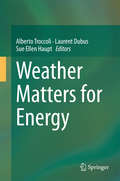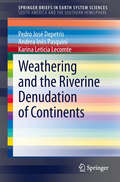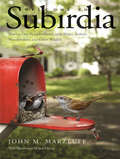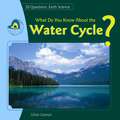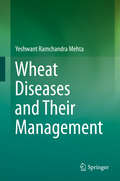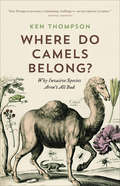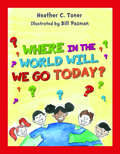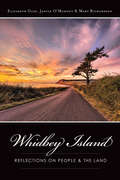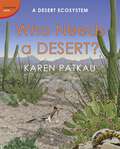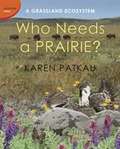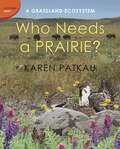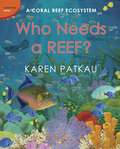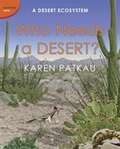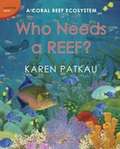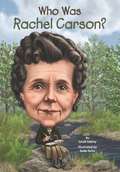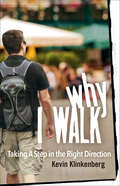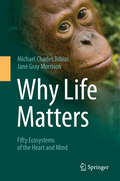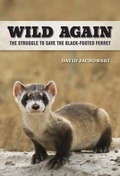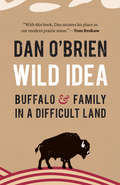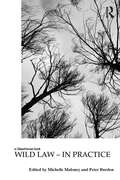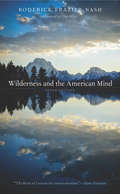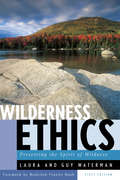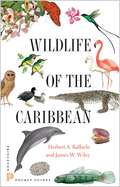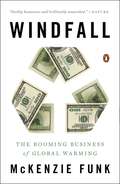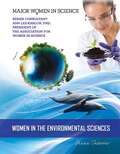- Table View
- List View
Weather Matters for Energy
by Alberto Troccoli Laurent Dubus Sue Ellen HauptIt is the purpose of this book to provide the meteorological knowledge and tools to improve the risk management of energy industry decisions, ranging from the long term finance and engineering planning assessments to the short term operational measures for scheduling and maintenance. Most of the chapters in this book are based on presentations given at the inaugural International Conference Energy & Meteorology (ICEM), held in the Gold Coast, Australia, 8-11 November 2011. The main aim of the conference was to strengthen the link between Energy and Meteorology, so as to make meteorological information more relevant to the planning and operations of the energy sector. The ultimate goal would be to make the best use of weather and climate data in order to achieve a more efficient use of energy sources. This book seeks to realise the same objective.
Weathering and the Riverine Denudation of Continents
by Pedro José Depetris Andrea Inés Pasquini Karina Leticia LecomteIn this monograph the authors present an overview of the state-of-the-art and use examples or case histories to illustrate the combined role of rock decay and rivers on continental denudation. The Earth's surface dynamics would not be conceivable without the fundamental component of rock weathering and the subsequent transport of solid debris and dissolved components to the coastal ocean through riverine drainage pathways. In other words, continental wear away is highly dependent on the mechanisms that control mineral decay. Moreover, besides the significant role played by rivers in shaping the Earth's outer skin, there is the important function that rivers perform in all geochemical cycles, mediating between the lithosphere, the hydrosphere, the biosphere and the hydrosphere. Drainage basins and the weathering of rocks that occur therein may be significant sources (or sinks) of carbon dioxide and, hence, play a significant role in affecting the Earth's climate.
Welcome to Subirdia
by Jack Delap John M. MarzluffWelcome to Subirdia presents a surprising discovery: the suburbs of many large cities support incredible biological diversity. Populations and communities of a great variety of birds, as well as other creatures, are adapting to the conditions of our increasingly developed world. In this fascinating and optimistic book, John Marzluff reveals how our own actions affect the birds and animals that live in our cities and towns, and he provides ten specific strategies everyone can use to make human environments friendlier for our natural neighbors. Over many years of research and fieldwork, Marzluff and student assistants have closely followed the lives of thousands of tagged birds seeking food, mates, and shelter in cities and surrounding areas. From tiny Pacific wrens to grand pileated woodpeckers, diverse species now compatibly share human surroundings. By practicing careful stewardship with the biological riches in our cities and towns, Marzluff explains, we can foster a new relationship between humans and other living creatures-one that honors and enhances our mutual destiny.
What Do You Know About the Water Cycle? (20 Questions: Earth Science)
by Gillian GosmanThe 20 questions in this volume give kids a thorough tour through the water cycle. The questions and their answers also explain related topics such as the difference between freshwater and saltwater, and the causes and effects of water pollution. This is a wonderful resource for reports and for building a vocabulary of scientific terms.
Wheat Diseases and Their Management
by Yeshwant Ramchandra MehtaWheat Diseases and Their Management addresses biotic and abiotic constrains to wheat production. Besides detailed illustrations and descriptions of the most important diseases of wheat in the world, it offers an updated view on the reemergence of some old diseases and the occurrence of new races of the pathogen. It deals with the sustainability of wheat production through precision agriculture and focuses on the importance of conservation tillage. The book also deals with pillars of integrated disease management which would be eco-friendly and reduce severity of diseases and yield losses, with acquired Latin-American experiences of more than 40 years.
Where Do Camels Belong?: Why Invasive Species Aren't All Bad
by Ken ThompsonWhere do camels belong? In the Arab world is the obvious answer. But they are relative newcomers there. They evolved and lived for tens of millions of years in North America, while today they retain their greatest diversity in South America and have their only wild populations in Australia. This is a classic example of the problems that underlie the issues of natural and invasive species, a hot issue right now, as the flip side of biodiversity. But do we need to fear invaders? And indeed, can we control them, and do we choose the right targets? In Where Do Camels Belong? Ken Thompson puts forward a fascinating array of narratives on invasive and natural plants and animals to explore what he sees as the crucial question - why only a minority of introduced species succeed, and why so few of them go on to cause trouble. He discusses, too, whether fear of invasive species could be getting in the way of conserving biodiversity, and especially of responding to the threat of climate change. This is a timely, instructive and controversial book that delivers unexpected answers.
Where in the World Will We Go Today
by Heather TonerLet's go on a journey! A tour of the world exploring Africa, Europe, South America, Asia, and the Middle East! Follow along on these pages to learn more about countries from all over the globe--countries that each have a story and a place on the map.
Whidbey Island: Reflections on People & the Land
by Mary Richardson Elizabeth Guss Janice O'MahonyFor generations, Whidbey Island's vivid beauty has made it a home for those drawn in by a rural landscape and thriving communities. Whether native tribes, pioneers, vacationers or retirees, all have enjoyed the island's legacy. Their stories illustrate Whidbey Island residents' devotion to their home. Authors Elizabeth Guss, Janice O'Mahony and Mary Richardson offer a compelling anthology that captures the history behind the intentional protection and restoration of natural and cultural areas on the island. Each story sheds new light on Whidbey Island's rich heritage. From the early settlements of Native Americans and Europeans, to federal involvement with the Civilian Conservation Corps and the U.S. Navy, continuing through the activism in the 1960s and 1970s, to today, this is the story of Whidbey Island.
Who Needs a Desert?: A Desert Ecosystem (Ecosystem Series)
by Karen PatkauKaren Patkau takes readers on an amazing voyage of discovery to find out • How deserts are formed • Where deserts are found • How plants and animals adapt to the severe environment • What wildlife thrives there • Which plants bloom under the blazing sun • How desert plants and animals get energy and food • What happens in the rainy seasons • Why desert land becomes barren • Why we need deserts
Who Needs a Prairie: A Grassland Ecosystem
by Karen PatkauKaren Patkau takes readers on an amazing voyage of discovery to find out <p><p> • How wild and rugged prairies become grasslands <p> • Why prairie inhabitants depend on each other and their surroundings <p> • What wildlife and plants thrive in large open spaces <p> • How seasons and weather conditions affect life on the prairies <p> • How fire restores the land <p> • What life is like on the Great Plains <p> • How a food chain forms <p> • How some prairie plants protect the land <p> • Why we need prairies
Who Needs a Prairie?: A Grassland Ecosystem (Ecosystem Series)
by Karen PatkauKaren Patkau takes readers on an amazing voyage of discovery to find out • How wild and rugged prairies become grasslands • Why prairie inhabitants depend on each other and their surroundings • What wildlife and plants thrive in large open spaces • How seasons and weather conditions affect life on the prairies • How fire restores the land • What life is like on the Great Plains • How a food chain forms • How some prairie plants protect the land • Why we need prairies
Who Needs a Reef?: A Coral Reef Ecosystem (Ecosystem Series)
by Karen PatkauKaren Patkau takes readers on an amazing voyage of discovery to find out • How coral reefs form • Why coral reefs bustle and teem with life • Why there are more kinds of living things on coral reefs than anywhere else in the sea • What the types of hard corals are • Which plants and animals attach themselves to coral reefs • How coral reefs protect shorelines • How coral reefs help develop natural harbors and beaches • Where the coral reef areas of the world are • Why we need coral reefs
Who Needs A Desert?: A Desert Ecosystem
by Karen PatkauThe Ecosystem Series explores jungle, icebergs, swamps, deserts, prairies and reefs. In Who Needs A Desert? Karen Patkau takes readers on an amazing voyage of discovery to find out how deserts are formed and where in the world they are most often found. Not only this, but readers will discover how plants and animals adapt to the severe environment, what wildlife thrives there, which plants bloom under the blazing sun and how desert plants and animals get energy and food.
Who Needs A Reef?: A Coral Reef Ecosystem (Ecosystem)
by Karen PatkauWho Needs a Reef A Coral Ecosystem
Who Was Rachel Carson? (Who was?)
by Dede Putra Sarah Fabiny Nancy HarrisonThough she grew up in rural Pennsylvania, Rachel Carson dreamed of the sea. In 1936 she began work with the Bureau of Fisheries and soon after published Under the Sea Wind, her first of many nature books. Her 1962 bestseller, Silent Spring, sent shockwaves through the country and warned of the dangers of DDT and other pesticides. A pioneering environmentalist, Rachel Carson helped awaken the global consciousness for conservation and preservation.
Why I Walk: Taking A Step in the Right Direction
by Kevin KlinkenbergA recent survey shows that members of Gen Y are walking 37 percent more than a decade ago, biking 122 percent more and taking public transit 100 percent more. Still, the legacy of the car culture persists. Raised on the notion that driving equals freedom, too many of us just don't realize that a personally rewarding alternative even exists.Just over three years ago, author Kevin Klinkenberg moved to Savannah, Georgia, from Kansas City, Missouri. In large part, he chose his new home because he was seeking a truly walkable place to live. In Why I Walk, Kevin goes beyond the typical arguments against suburbia, showing how walking on a daily basis actively benefits: His finances His sense of personal freedom His social life His healthThe majority of us still cling to the belief that a house in the suburbs, with good schools, low crime, and easy parking is the American Dream. By focusing directly on the real, measurable advantages of choosing to be a pedestrian, Why I Walk makes a convincing case for ending our love affair with the automobile. This highly readable, first-person narrative handily provides the answer to the pressing question, "Why do I walk?"Why? Because getting there is twice the fun.Kevin Klinkenberg is the principal designer at K2 Urban Design. For more than two decades he has been working to create sustainable, sociable environments and walkable communities in cooperation with developers, cities, nonprofits, and public agencies.
Why Life Matters
by Michael Charles Tobias Jane Gray MorrisonDr. Michael Charles Tobias and Jane Gray Morrison are world-renowned ecological philosophers and activists, interdisciplinary social and environmental scientists and broad-ranging, deeply committed humanists. This collection of fifty essays and interviews comprises an invigorating, outspoken, provocative and eloquent overview of the ecological humanities in one highly accessible volume. The components of this collection were published in the authors' "Green Conversations" blog series, and pieces in the Eco News Network from 2011 to 2013 and feature luminaries from Jane Goodall to Ted Turner to the Secretary of the Smithsonian Institution to the former head of the UN Convention on Biological Diversity. Stunning color photographs captured by the authors and contributors make Why Life Matters: Fifty Ecosystems of the Heart and Mind a feast for the eyes as well as the mind and soul. Ethics, science, technology, ecological literacy, grass-roots renaissance thinkers, conservation innovation from the U. S. to the U. K. ; from India to Ecuador; from Bhutan to Haiti; from across Africa, the Neo-Tropics, Central Asia and Japan, to Rio, Shanghai and Manhattan - this humanistic ode to the future of life on earth is a relevant and resonating read. Michael Tobias and Jane Gray Morrison, partners who between them have authored some 50 books and written, directed and produced some 170 films, a prolific body of work that has been read, translated and/or broadcast around the world, have been married for more than a quarter-of-a-century. Their field research across the disciplines of comparative literature, anthropology, the history of science and philosophy, ecology and ethics, in over 80 countries, has served as a telling example of what two people - deeply in love with one another - can accomplish in spreading that same unconditional love to others - of all species.
Wild Again
by David S. JachowskiThis engaging personal account of one of America's most contested wildlife conservation campaigns has as its central character the black-footed ferret. Once feared extinct, and still one of North America's rarest mammals, the black-footed ferret exemplifies the ecological, social, and political challenges of conservation in the West, including the risks involved with intensive captive breeding and reintroduction to natural habitat. David Jachowski draws on more than a decade of experience working to save the ferret. His unique perspective and informative anecdotes reveal the scientific and human aspects of conservation as well as the immense dedication required to protect a species on the edge of extinction. By telling one story of conservation biology in practice--its routine work, triumphs, challenges, and inevitable conflicts--this book gives readers a greater understanding of the conservation ethic that emerged on the Great Plains as part of one of the most remarkable recovery efforts in the history of the Endangered Species Act.
Wild Idea: Buffalo and Family in a Difficult Land
by Dan O'BrienFor more than forty years the prairies of South Dakota have been Dan O’Brien’s home. Working as a writer and an endangered-species biologist, he became convinced that returning grass-fed, free-roaming buffalo to the grasslands of the northern plains would return natural balance to the region and reestablish the undulating prairie lost through poor land management and overzealous farming. In 1998 he bought his first buffalo and began the task of converting a little cattle ranch into an ethically run buffalo ranch. Wild Idea is a book about how good food choices can influence federal policies and the integrity of our food system, and about the dignity and strength of a legendary American animal. It is also a book about people: the daughter coming to womanhood in a hard landscape, the friend and ranch hand who suffers great tragedy, the venture capitalist who sees hope and opportunity in a struggling buffalo business, and the husband and wife behind the ranch who struggle daily, wondering if what they are doing will ever be enough to make a difference. At its center, Wild Idea is about a family and the people and animals that surround them—all trying to build a healthy life in a big, beautiful, and sometimes dangerous land.
Wild Law - In Practice (Law, Justice and Ecology #4)
by Peter Burdon Michelle MaloneyWild Law - In Practice aims to facilitate the transition of Earth Jurisprudence from theory into practice. Earth Jurisprudence is an emerging philosophy of law, coined by cultural historian and geologian Thomas Berry. It seeks to analyse the contribution of law in constructing, maintaining and perpetuating anthropocentrism and addresses the ways in which this orientation can be undermined and ultimately eliminated. In place of anthropocentrism, Earth Jurisprudence advocates an interpretation of law based on the ecocentric concept of an Earth community that includes both human and nonhuman entities. Addressing topics that include a critique of the effectiveness of environmental law in protecting the environment, developments in domestic/constitutional law recognising the rights of nature, and the regulation of sustainability, Wild Law - In Practice is the first book to focus specifically on the practical legal implications of Earth Jurisprudence.
Wilderness and the American Mind
by Roderick Frazier Nash Char MillerRoderick Nash's classic study of changing attitudes toward wilderness during American history, as well as the origins of the environmental and conservation movements, has received wide acclaim since its initial publication in 1967. The Los Angeles Times listed it among the one hundred most influential books published in the last quarter century, Outside Magazine included it in a survey of "books that changed our world," and it has been called the "Book of Genesis for environmentalists." For the fifth edition, Nash has written a new preface and epilogue that brings Wilderness and the American Mind into dialogue with contemporary debates about wilderness. Char Miller's foreword provides a twenty-first-century perspective on how the environmental movement has changed, including the ways in which contemporary scholars are reimagining the dynamic relationship between the natural world and the built environment.
Wilderness Ethics: Preserving the Spirit of Wildness
by Laura Waterman Guy WatermanThe classic environmental call to action 2014 marks the 50th anniversary of the passing of the Wilderness Act--the landmark piece of legislation to set aside and protect pristine parts of the American landscape. This anniversary edition of Wilderness Ethics should help put the many issues surrounding wilderness in focus.
Wildlife of the Caribbean (Princeton Pocket Guides)
by Herbert Raffaele James WileyThis is the first comprehensive illustrated guide to the natural world of the Caribbean islands. It contains 600 vivid color images featuring 451 species of plants, birds, mammals, fish, seashells, and much more. While the guide primarily looks at the most conspicuous and widespread species among the islands, it also includes rarely seen creatures―such as the Rhinoceros Iguana and Cuban Solenodon―giving readers a special sense of the region's diverse wildlife. <p><p> Each species is represented by one or more color photos or illustrations; details regarding its identification, status, and distribution; and interesting aspects of its life history or relationship to humans. In addition, an introductory section focuses on the unique characteristics of the Caribbean’s fauna and flora, the threats faced by both, and some of the steps being taken to sustain the area’s extraordinary natural heritage.
Windfall
by Mckenzie FunkA fascinating investigation into how people around the globe are cashing in on a warming world McKenzie Funk has spent the last six years reporting around the world on how we are preparing for a warmer planet. Funk shows us that the best way to understand the catastrophe of global warming is to see it through the eyes of those who see it most clearly--as a market opportunity. Global warming's physical impacts can be separated into three broad categories: melt, drought, and deluge. Funk travels to two dozen countries to profile entrepreneurial people who see in each of these forces a potential windfall. The melt is a boon for newly arable, mineral-rich regions of the Arctic, such as Greenland--and for the surprising kings of the manmade snow trade, the Israelis. The process of desalination, vital to Israel's survival, can produce a snowlike by-product that alpine countries use to prolong their ski season. Drought creates opportunities for private firefighters working for insurance companies in California as well as for fund managers backing south Sudanese warlords who control local farmland. As droughts raise food prices globally, there is no more precious asset. The deluge--the rising seas, surging rivers, and superstorms that will threaten island nations and coastal cities--has been our most distant concern, but after Hurricane Sandy and failure after failure to cut global carbon emissions, it is not so distant. For Dutch architects designing floating cities and American scientists patenting hurricane defenses, the race is on. For low-lying countries like Bangladesh, the coming deluge presents an existential threat. Funk visits the front lines of the melt, the drought, and the deluge to make a human accounting of the booming business of global warming. By letting climate change continue unchecked, we are choosing to adapt to a warming world. Containing the resulting surge will be big business; some will benefit, but much of the planet will suffer. McKenzie Funk has investigated both sides, and what he has found will shock us all. To understand how the world is preparing to warm, Windfall follows the money.
Women in the Environmental Sciences (Major Women in Science #10)
by Shaina IndovinoWomen have made major contributions to science throughout history, including in the environmental sciences. Learn about the lives of some of the most amazing women in environmental science, from Rachel Carson to Lena Ma, as well as their exciting and important work. Discover what it takes to work in the environmental sciences. Find out about the opportunities for women in the field. Read Women in the Environmental Sciences to see if following in the footsteps of the many brilliant women who have made their mark in environmental science is something you want to do.
